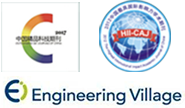Abstract:
Metal-semiconductor heterostructured materials have been extensively utilized in the photothermal reduction of CO
2 due to their unique electronic structure and interfacial effect. As a method for preparing such materials, the in-situ exsolution technique involves the precipitation of metal ions from the perovskite lattice, forming nanoparticles anchored on the surface. The resultant catalyst is highly performant and stable, gaining recent attention. However, traditional exsolution is conducted at high temperatures, consuming much time and energy and may cause particle agglomeration. In this research, we adopted dielectric barrier discharge (DBD) for the rapid plasma-driven exsolution of La
0.43Ca
0.37Ti
0.86Ni
0.08Cu
0.06O
3-δ at room temperature, yielding a composite of alloy-supported porous perovskite (LCTNC-pl). Under photothermal conditions, LCTNC-pl presented boosted reverse water gas shift reaction (RWGS) performance, with a CO selectivity of 97.29% and a gas evolution rate of 3.15 mmol·g
−1·h
−1 at 400℃, 10 times higher than La
0.43Ca
0.37TiO
3-δ’. This enhancement stems from the increased active sites induced by plasma and the regulation of the photogenerated charge by the metal-semiconductor heterojunction. Our work demonstrates a rapid and simple method for synthesizing heterostructure with high-performance photothermal catalytic activity.


 下载:
下载: